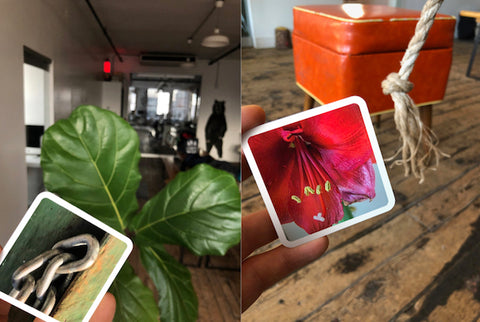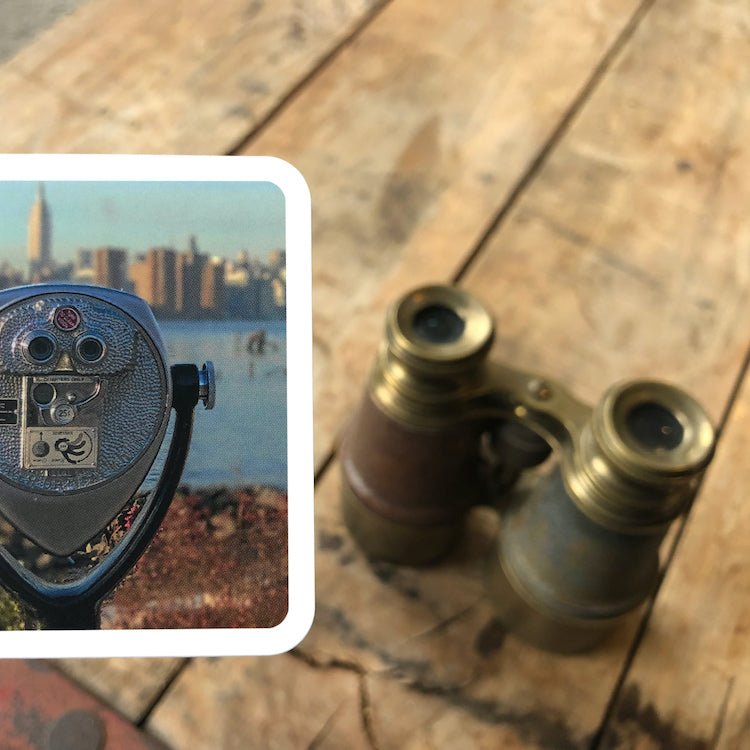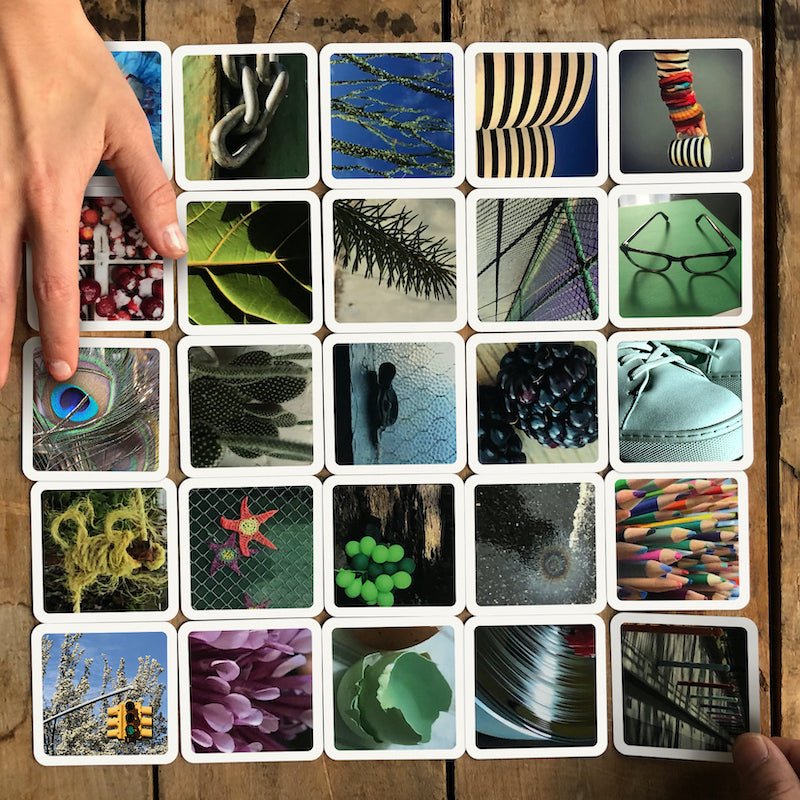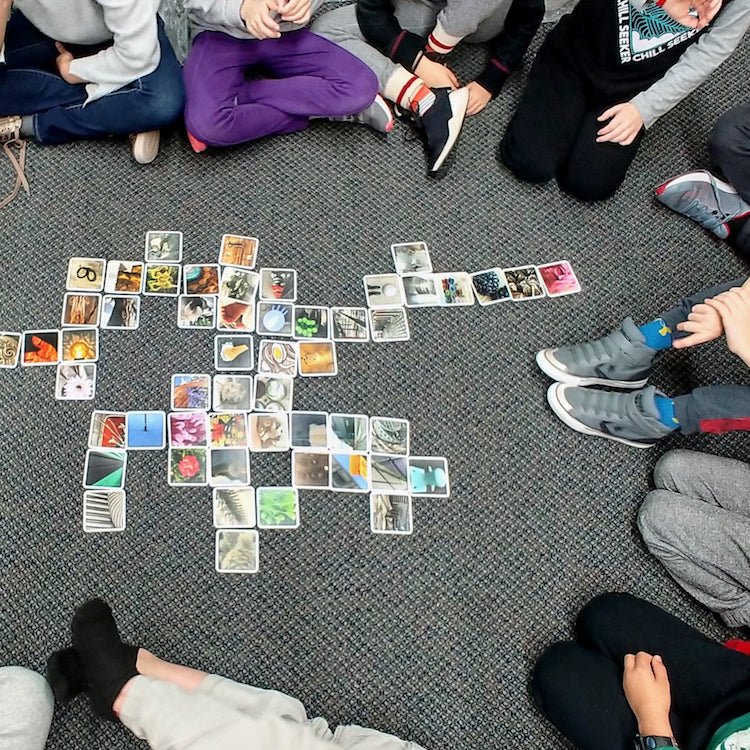The following activities are games of mindful curiosity. With a little imagination added in, they can help turn your surroundings (e.g. at home or on a walk) into a treasure trove of small marvels. They are intended for parents with younger children, but adults will also find them satisfying and meditative. In this post you will also find a free printable to download that will help get you started on two of the activities.
Sound Detective

Your everyday surroundings are full of interesting sounds. The hum of your freezer. The clicking of your radiator. The sound of a particular door closing. In many ways they are background noise. But they are also sounds unique to your environment.
Start recording these sounds using your phone (e.g. using a voice-memo app) throughout your day. Once you've accumulated a few, play the sounds one at a time for your kids. Then, have them try and figure out the source of each sound. They may know it on the spot. More often, they will have to do some detective work. A benefit of this activity is that it employs a phone as a creative tool, rather than as a screen for games/TV.
Teachers: A version of this game is playable over a video call. There are resources like this one on youtube, though it could be more fun to find sounds special to your class. For example, play a sound for 30 seconds, and then have students write down or draw out what they think they heard.
Bonus Activity: After the kids have guessed the actual source of the sound, have them imagine a more exciting version. For example, a faucet running could be a waterfall, or the tapping of a radiator could be a metal woodpecker. Kids could even use the different things they imagine to start building an entire story-world.
Eye Spy

Things "visually connect," like when clouds overhead look like a herd of sheep. Or when the pattern of tennis strings look like the grid of a breakfast waffle. Things might have similar shapes, colors, patterns - really, anything you can imagine.
A game of visual connection like Eye Spy is a great way to (re)explore your surroundings. You need some simple printed images made into "photo cards" to start, sized about 3" x 3". The patterns, shapes and colors are more important than the subject of the photo. If you have a set of OuiSi photo cards, then you are ready to go. Otherwise, try the following:
- magazine pictures, old photos or postcards, cut down into snippets with varying visual cues (make sure you spend a lot of time on this step, as the game will only be as good as the images you create)
-
use photos from this free OuiSi printable
Starting with a photo card in hand, find something in the area that visually connects with that image. Then, have others guess what you spotted. The first to correctly guess draws the next photo, and the round begins over again. It sounds simple, and it is. But Eye Spy is surprisingly fun and full of gratifying "aha!" moments.
Teachers: This is another game playable over a video chat with a young class. Simply choose a photo card (or digital image) and display it on your screen. Then, have students find something in their home that visually connects. Students can either hold up their own image/object, or they can write about or draw the object. This is a great way to "reconvene" a virtual classroom. Again, you may find this print-and-play useful.
Visual Scavenger

This is another riff on visual connecting. Perform a scavenger hunt in your home for things that look similar. A simple example might be all the things that are purple. Or try rectangular items, or things with long shadows.
You can make the scavenger hunt more challenging. Begin with a photo card from the previous activity (or from the free printable). Then, find an object in the house that visually connects with that photo card. Next, look through your photo cards to find a new card that visually connects with that found object. Keep going back and forth between photo cards and found objects. Use a phone or camera to document the discoveries. This is again a great way to teach good tech habits (using the phone as a creative tool).
Teachers: Create a game of Scavenger "tag." Beginning with a first student, give them a photo card to visually connect with an object from their home. The student can then take a photo and send it back to you. Then, send that new image off to a new student. Keep going through the class one at a time until you have a full thread of connected photos (a photologue) co-created by the class! Feel free to use this print-and-play, if helpful.

That's it! If you liked this post, make sure you sign up for our newsletter (very bottom of page). And don't forget to download the free OuiSi printable.
Thanks for reading,
Paul



2 comments
Michele M OMalley
My hubby and I play this and love it. The justifying WHY cards should go together is hilarious. I bought this for my 10 yr old granddaughter for Christmas. Can’t wait to play it with her!
My hubby and I play this and love it. The justifying WHY cards should go together is hilarious. I bought this for my 10 yr old granddaughter for Christmas. Can’t wait to play it with her!
Linda Keller
Love the creativity inherent in finding connections among these images, plus the games you’ve thought up. Can’t wait to explore this with my 4 1/2-year-old granddaughter. Have recently been experimenting with magazine photos cut into shapes a la Matisse to make collages. So this invention of yours is right up my alley! Thanks.
Love the creativity inherent in finding connections among these images, plus the games you’ve thought up. Can’t wait to explore this with my 4 1/2-year-old granddaughter. Have recently been experimenting with magazine photos cut into shapes a la Matisse to make collages. So this invention of yours is right up my alley! Thanks.